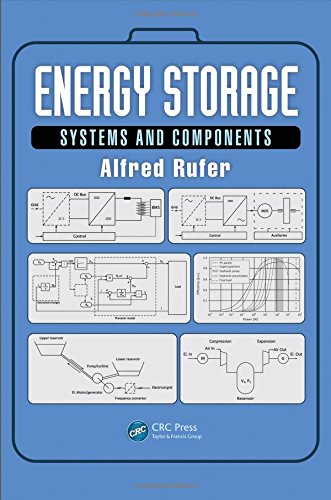Energy Storage: Systems and Components
暫譯: 能源儲存:系統與組件
Alfred Rufer
- 出版商: CRC
- 出版日期: 2017-11-06
- 售價: $6,820
- 貴賓價: 9.5 折 $6,479
- 語言: 英文
- 頁數: 290
- 裝訂: Hardcover
- ISBN: 1138082627
- ISBN-13: 9781138082625
海外代購書籍(需單獨結帳)
相關主題
商品描述
This book will provide the technical community with an overview of the development of new solutions and products that address key topics, including electric/hybrid vehicles, ultrafast battery charging, smart grids, renewable energy (e.g., solar and wind), peak shaving, and reduction of energy consumption. The needs for storage discussed are within the context of changes between the centralized power generation of today and the distributed utility of tomorrow, including the integration of renewable energy sources.
Throughout the book, methods for quantitative and qualitative comparison of energy storage means are presented through their energy capacity as well as through their power capability for different applications. The definitions and symbols for energy density and power density are given and relate to the volume and weight of a given system or component. A relatively underdeveloped concept that is crucial to this text is known as the theory of Ragone plots. This theory makes possible the evaluation of the real amount of energy that can possibly release out of a given system, with respect to the level of power dependency chosen for the discharge process.
From systems using electrochemical transformations, to classical battery energy storage elements and so-called flow batteries, to fuel cells and hydrogen storage, this book further investigates storage systems based on physical principles (e.g., gravitational potential forces, air compression, and rotational kinetic energy). This text also examines purely electrical systems such as superconductive magnets and capacitors. Another subject of analysis is the presentation of power electronic circuits and architectures that are needed for continuously controllable power flow to and from different storage means. For all systems described, the elementary principles of operation are given as well as the relationships for the quantified storage of energy. Finally, Energy Storage: Systems and Components contains multiple international case studies and a rich set of exercises that serve both students and practicing engineers.
商品描述(中文翻譯)
本書將為技術社群提供一個關於新解決方案和產品發展的概述,這些解決方案和產品針對關鍵主題,包括電動/混合動力車輛、超快速電池充電、智慧電網、可再生能源(例如,太陽能和風能)、削峰和平減能源消耗。所討論的儲能需求是在當前集中式發電與未來分散式公用事業之間變化的背景下,並包括可再生能源來源的整合。
在整本書中,通過不同應用的能量容量和功率能力,介紹了能量儲存方式的定量和定性比較方法。提供了能量密度和功率密度的定義和符號,並與特定系統或元件的體積和重量相關。對於本書至關重要的一個相對未發展的概念是Ragone圖理論。這一理論使得能夠評估從特定系統中可能釋放的實際能量量,並考慮到為放電過程選擇的功率依賴程度。
從使用電化學轉換的系統,到傳統的電池儲能元件和所謂的流動電池,再到燃料電池和氫儲存,本書進一步探討基於物理原則的儲存系統(例如,重力勢能、空氣壓縮和旋轉動能)。本書還檢視純電系統,如超導磁體和電容器。另一個分析主題是需要的功率電子電路和架構,以實現對不同儲存方式的持續可控功率流動。對於所有描述的系統,提供了基本的操作原理以及能量量化儲存的關係。最後,《能源儲存:系統與元件》包含多個國際案例研究和豐富的練習題,服務於學生和在職工程師。















